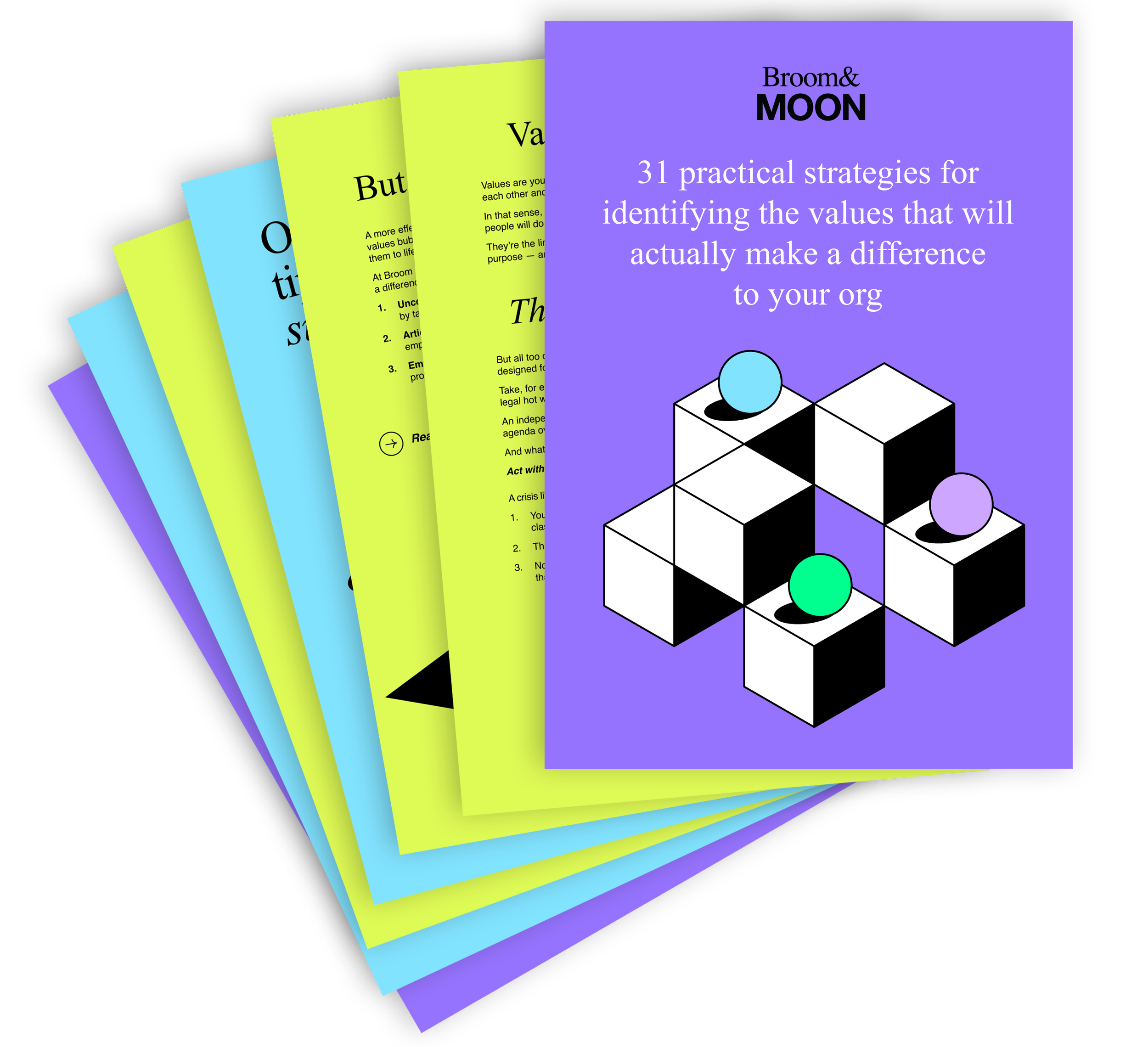Why do you need a moonshot?
Why should you invest time and resources into uncovering, articulating and communicating your vision, strategy, purpose and values?
Short answer: such moonshot thinking is the foundation for any successful business — as an increasing number of business leaders is beginning to recognise.
For example, in a recent survey, 51% of organisations said that when it comes to their employees, the number-one priority in 2023 is engaging people around purpose, strategy and values.
Sadly, in that same survey, just 56% of execs said their employees understood their strategy, vision and purpose. Even fewer employees (47%) said they understood how they contribute to that vision.
That’s a shame, because a clearly articulated moonshot will act like a decision-making tool at every level of your organisation.
It will get everyone pulling together and focused on the right things.
It will give managers and individual team members clarity on what they need to do each day.
It will answers questions like:
Why are we here?
Who do we serve?
What should we, as a team, be focusing on today? This week? This month?
And how are these daily priorities contributing to our larger goals?
In their brilliant book Made to Stick, Chip and Dan Heath cite a great example of the effect of a clearly articulated mission.
Employees at The Daily Record, a local newspaper in a small-town in the US, know exactly what they’re expected to do when they come into work each day — thanks to a simple, three-word mission statement:
Names, names, names.
As mission statements go, this is quite unusual — and it’s brilliantly bold.
But what does it mean? Well, the reason people buy a local newspaper is to read about local people, right?
So when the journalists and photographers come into work each day, they know their only job is to get as many local names into the paper as possible.
If they’re a reporter, they’ll know to follow up on local human interest stories, and to quote as many locals in those stories as they can.
If they’re a photographer reporting on the opening of a new building, they’ll know their job isn’t to photograph the building, but to photograph a crowd of people in front of the building.
It’s a concrete example of how moonshot thinking can create a daily decision making tool that keeps people focused on what matters.
Now imagine what clarity like that could do for your team.


